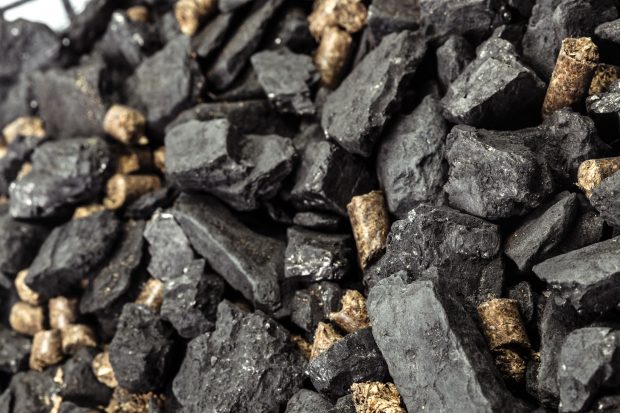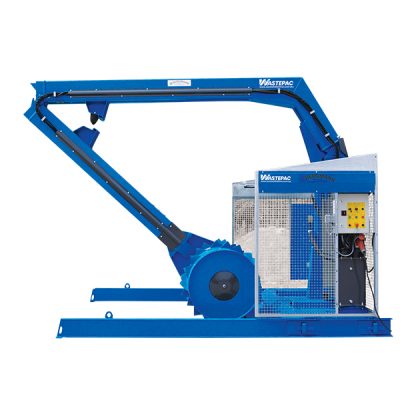There are many benefits to introducing industrial trash compactors as part of your business’ waste management. Waste compaction is the process of compacting waste material and reducing it into smaller manageable sizes for more efficient waste disposal. Generally speaking, the higher the compaction rate, the more efficiently the landfill can receive and store, and minimise dumpster pickup frequency.
Which Compactor Should Your Business Operate?
Cashback on Your Waste
An industrial trash compactor machine can be a lucrative investment for businesses. They are a reliable and effective method of targeting high waste costs and reducing the number of bin empties required for high-volume waste generators.
A Service to the Environment
A compactor machine, therefore, is able to free up valuable space and stabilise the volume of landfills, minimise the human resources required to manage waste and divert recyclables from dumpster sites – all of which contribute to a more sustainable environment.
Waste Initiatives provides a range of balers designed to reduce the volume of this waste and convert it into transportable materials that can also be sold to recyclers.
Noticeable Changes at Work
When businesses decide to move forward with a compactor machine, they not only see savings in the space used within their waste collectors but also minimise unnecessary labour costs, improve the hygiene of their premises, and gradually lower their carbon footprint with lower pickup rates.
How to Choose from the Range of Compactors Available
Through Waste Initiatives, your business has access to a wide variety of waste compressors. Our team have over 45 years of experience in the industry, ensuring you will be guided to the compactor machine that best suits your waste elimination goals and budget. Speak directly to one of our experts by contacting us through this link.
For a comprehensive overview of the machinery best designed to compact specific waste types, continue reading on.
Compacting Dry Waste
Dry waste, commonly found in all businesses, includes cardboard, bottles, cans, clothing, plastic, wood, glass, metals and paper. For the compaction of these materials, we recommend the installation of integrated or stationary compactors.

Integrated Compactors
An integrated compactor machine is designed to fit seamlessly into the existing infrastructure of your business or facility. They are popular for their ability to be synchronised with other equipment like balers, shredders, or recycling systems.
Where Integrated Compactors are Used
In general, integrated and stationary machines are not suited to processing liquid. However, exceptions like the integrated RPW30 Compactor are ideal for processing high liquid content, due to the machine’s unique ‘pendulum’ compaction method. If your site requires contamination issues to be eliminated, a common need in sites such as shopping centres and hospitals, consider the RP30. This compactor machine is valued for its easy use and safety measures, meaning all your staff can use and operate it confidently.

Stationary Compactors
Electric utility companies reduce their nitrate emissions and increase the heat of their boilers by using TDF as an alternative fuel.
Where Stationary Compactors are Used
You are spoiled for options choosing a compactor machine. A great example is the WastePac SC1000, a high-performance static compactor machine fit for compact spaces and designed for mobility. Speak to our team about the optional castor wheel integrated base, which will allow you to save time with container changes. The SS2500 Short, a tight-footprint-suited compactor machine, is optimal for processing dry waste in areas like docks, where it can be fed over the rear. If you are a large retailer or operate an industrial site, consider the SC2500, a compactor machine capable of accepting large feed material sizes in credit to its large blade face. For the largest of industrial sites, where waste such as extra-large boxes, crates, and furniture items are common, enquire with our team about the SC3500. If you are more concerned with ridding heavy-duty wastes from your site, such as timber pallets, then ask us about our high-force Twin Auger Compactor.
For more information on these mentioned waste units, as well as an insight into the customisable options available for them and other unmentioned stationary and integrated waste units, follow this link.

Compacting Bulky Materials
Bulky materials, which are any dry material that are stored in heaps, granular, powdery or lumpy, are compressible by transfer compactors. Typically, these machines are chosen by those dealing with woodchips, gravel, clay and cement, but also for reducing the size of minerals, ores, coal and much more.

Transfer Compactors
Designed to consolidate high volumes of bulky wastes being fed from multiple sources, our clients choose a transfer compactor machine for its robust design, which ensures the machine will operate for a long time at optimal performance.
Where Transfer Compactors are Used
Specialised for use in high-throughput transfer stations and MRFs, the largest stationary compactor machine within our range (TP4500), is chosen for its high compaction force that optimises transport payloads. It’s also favoured for its ability to be used in conjunction with bins or transfer trailers. The TP3500SR is typically found in public drop-off facilities and large transfer stations, in credit to how easy it is to operate and compact multiple bulky waste types. Likewise, the TP3500HR is suitable for transfer stations with high-volume peak periods that pack maximum bin weights.
More information on the transfer machines available, view HERE.

Compacting Within Open Skip Bins
Timber pallets, crates and other bulky materials stored within skip bins are compacted through roll packers.

Roll Packers
Waste Initiatives offers Bergmann roll packers, which utilise a rolling drum or a wheel to compact waste. This rolling action effectively crushes and compacts the waste within a container or compaction chamber. Many businesses value them for their manoeuvrability and high waste density levels.
Where Roll Packers are Used
While the RP7700 benefits businesses needing to keep a tight cost cap, the RPV7700 is picked by large industrial sites needing to compact multiple bins at a time. In fact, this particular unit can be used for up to 10 bins in parallel, traversing on a rail length. For operations needing a mobile option, the RPM7700 is capable of moving skip bins on-site and is commonly used in saw-tooth transfer stations to achieve high bin weights.
Further details on the Bergmann roll packers we supply are viewable HERE.

Compacting High Volumes of Cardboard Boxes and Other Dry Waste
Roto compactors have an opening at shoulder height so that staff operating in workplaces with frequent package deliveries can easily dispose of cardboard and other dry wastes.

Roto Compactors
The Bergmann roto compactors that Waste Initiatives provide are the PS1400 and APS1100.
Details on what differentiates these units are listed HERE.

General Waste Compactors
Waste presses are convenient machinery used for squashing general waste bags and miscellaneous material, thereby reducing the number of collections required.
Waste Presses
Bin Pressers compact per the size of the bin, with machinery available to suit 240L and 660/1100L sizes.
When enquiring with our team, you may also want to discuss the option of owning a Bag Press, which is a simple system that removes air space inside garbage bags so you can fit more waste into the same bin.
Contact our expert team now!

Make An Enquiry
Talk to Waste Initiatives today to find out more about our waste & recycling solutions.
